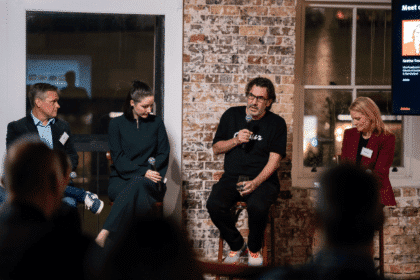In this opinion piece Malcolm Alder from Sydney-based digital strategy firm Orchestrate argues all things digital is the mantra of agencies these days but are many merely flogging a product?
Companies embarking on their digital transformation journey need to think holistically about the implication but have to be very precise ideas about where to begin. Leaders need to gather perspectives widely and encourage a diversity of thinking, but everyone involved needs to leave their acronyms at the door and agree to speak in a common tongue
The need to think holistically about your business and its challenges.
There’s no shortage of people and agencies in the market who say they “do digital strategy”. Our observation is that a lot of them have a pretty narrow field of vision when doing so. Frequently, it’s essentially a marketing plan for the digital version of a product or service.
This is legitimately the domain of digital and advertising agencies. The limitation is that defining digital strategy at this level means it’s not a C-suite issue.
Nor does it have any regard (or permission) to consider a wide range of other highly relevant enterprise activities that should be considered within a genuine, corporate level strategy for the digital world. Other areas of digital activity include:
- Procurement and supply chain, compliance and security,
- Industry intelligence gathering,
- Governance and of course,
- Staff interactions in areas such as recruitment, training,
- Knowledge sharing, aids to productivity.
Drawing on direct experience and from reviewing a wide range of approaches to digital strategy development, Orchestrate has created a holistic framework that provides a sound basis for thinking about and analysing the entirety of an organisation’s digital activities and interactions.
Identify a small number of carefully defined projects
Using the Model of Digital Business provides a holistic, single framework for all subsequent analysis, development of future options and making strategic choices.
Ideally, the process starts with a CEO conversation using this framework. (Depending on the CEO’s level of understanding, it may be preceded by providing some trends or data points to set an appropriate context for the industry and company.)
The first step is to explain all the relevant elements of the framework e.g. interface v enabling technology and why they are separated, or, who “followers” refers to as a stakeholder group.
Secondly, the CEO identifies areas that, in a digital context, will be most important to the success of the organisation over a chosen time period, say two years. Thirdly, the CEO rates their perception of current performance in those key areas.
Logically, where high importance to future success coincides with current performance being lowest, identifies the areas for immediate, defined projects. Assuming the organisation has the capacity to embark on, say, two initial projects, preferably one should be from the left side of capability/culture which are largely internal facing, and the other from the right side of enabling technology/insight which are external facing.
It’s important to recognise that there’s no inherent conflict between starting off a couple of digital projects in parallel with developing a more comprehensive, longer term corporate digital strategy using the classic model of:
- “Where are we currently?”
- “Where do we want to get to?”
- “How are we going to get there?”
In essence, the high level framework analysis described above delivers a short-cut version of the first two steps of classical strategy development in a digital context. The most important thing is just to get moving quickly and start learning, iterating and building confidence and understanding as a leadership team.
Include a diverse range of perspectives in the projects
One of the ironies (and potential pitfalls) of today’s digital world, is that in most large non-technology organisations, typically, it’s the most senior people with the most power that are the least digitally savvy individuals.
For evidence of this, the two reports below from Sensis and EY provide great Australian data.
Sensis Social Media Report May 2015
Digital Australia: State of the Nation
This experience misalignment is just one reason why there’s great benefit to be gained from including people with diverse backgrounds and perspectives on digital project teams.
Certainly in any business that has B2C or citizen interaction i.e. government, team diversity should be non-negotiable. Diversity should include not only gender, age, seniority and ethnic/social background but also geography, role, disability and even personality orientation if possible eg. stances on risk, optimism, and sociability for instance.
Nor should this necessarily be confined solely to employees. There’s nothing like involving customers, suppliers or business partners to help blow away false assumptions and sacred cows from the outset.
Use a single, common language; plain English
If you have good team diversity as suggested, there’s little option but to ensure all communication is in plain English.
However, even if that’s not the case, it is good practice. Jargon, geek speak and excessive use of three letter acronyms should be minimised if not banned.
In all but the most technical of industries, such terms don’t matter to customers so eliminate them early. If you’re in the C-suite, you can set the tone on this.
Don’t accept anything that’s not expressed clearly in plain English. Challenge anyone who can’t express something in plain English to go away and return when they can. This is one area where any lack of technology understanding can be used shamelessly to your advantage.
Next steps
Whether you intend to go straight to a full blown digital strategy development program, or start with a couple of modest, defined projects, or both in parallel, you may need some help. You may not have the necessary skills internally, or don’t have any spare capacity, or you may just recognise the value an external, independent party can bring through constructive challenge.
One area that can be particularly challenging for companies that are not too experienced in the digital realm is when the time comes to select business partners to help you. Whether you’re considering senior level, independent advice or a hands-on digital agency to build websites, apps, or e-commerce platforms the third part in this series provides practical advice on how to go about finding and selecting the right digital business partners for your organisation and its culture.
This article was originally published on B&T’s sister site www.which-50.com









